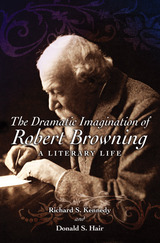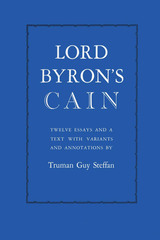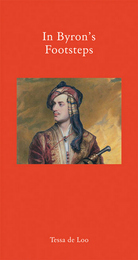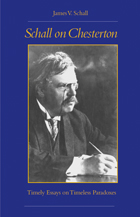Cloth: 978-0-674-08949-5
Library of Congress Classification PR4381.A3M35 1973 vol. 9
Dewey Decimal Classification 821.7
George Gordon Byron was a superb letter-writer: almost all his letters, whatever the subject or whoever the recipient, are enlivened by his wit, his irony, his honesty, and the sharpness of his observation of people. They provide a vivid self-portrait of the man who, of all his contemporaries, seems to express attitudes and feelings most in tune with the twentieth century. In addition, they offer a mirror of his own time. This first collected edition of all Byron’s known letters supersedes Prothero’s incomplete edition at the turn of the century. It includes a considerable number of hitherto unpublished letters and the complete text of many that were bowdlerized by former editors for a variety of reasons. Prothero’s edition included 1,198 letters. This edition has more than 3,000, over 80 percent of them transcribed entirely from the original manuscripts.
The ninth volume in Leslie Marchand’s highly acclaimed, unexpurgated edition of Byron’s letters finds the poet in Pisa with Teresa Guiccioli. His unique journal, “Detached Thoughts,” is finished shortly after his arrival in November 1821, and he is drawn into Shelley’s circle (including Edward Williams, Thomas Medwin, John Taaffe, and later Trelawny). His letters to Mary Shelley, the Hunts, and Trelawny after the death of Shelley are especially moving. Another tragedy, the death of his daughter Allegra, leaves him deeply affected, and he refers to it time and time again.
Money problems continue to plague him, as do suspicions surrounding his political activities. Following a fracas with a half-drunken dragoon and the imprisonment of two of his servants because of it, Byron is forced to leave Pisa and install himself and Teresa in a villa near Leghorn. His correspondence with his publisher reveals increasing displeasure with Murray’s delays, indecision, and anxiety over Don Juan, and Byron finally breaks off the relationship. But his output of verse is in no way lessened, and by the end of this volume in 1822, he has finished six more cantos for Don Juan as well as other poems.
See other books on: 1788-1824 | Byron, George Gordon | Byron, George Gordon Byron, Baron | Journals | Poets, English
See other titles from Harvard University Press








